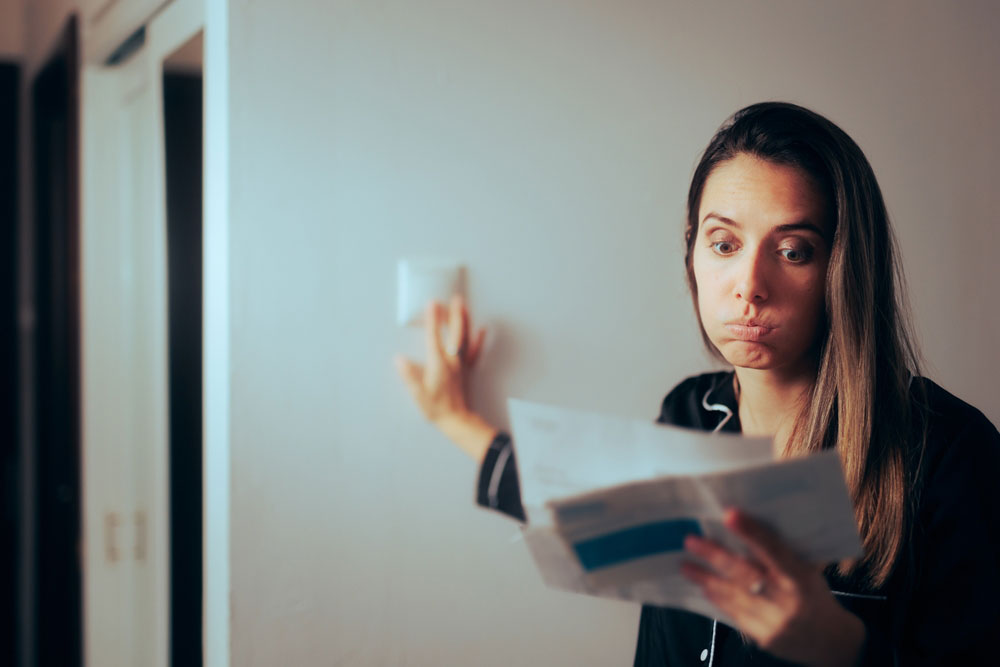With rising energy prices affecting households across the UK, many homeowners and renters are looking for practical ways to reduce their electricity bills. While major upgrades like installing solar panels or replacing appliances may not be financially viable for everyone, there are plenty of smaller, everyday changes that can add up to noticeable savings.
By understanding how electricity is used in your home and making simple adjustments, you can lower your costs without sacrificing comfort or convenience. This blog explores straightforward strategies to cut energy use and reduce bills, without any major investment.
Use Appliances More Efficiently
Everyday appliances contribute significantly to your electricity usage, but a few simple changes in how you use them can lead to meaningful savings.
- Only run dishwashers and washing machines with full loads: Running partial loads wastes both electricity and water, especially if done frequently.
- Wash clothes at 30°C instead of higher temperatures: Lower temperature settings use significantly less energy while still effectively cleaning most laundry.
- Avoid using the tumble dryer when possible: Air-drying clothes, even indoors, uses no electricity and reduces wear on fabrics.
- Turn off appliances at the wall: Many devices continue to draw power in standby mode, so switching them off at the plug cuts unnecessary usage.
Improve Heating and Hot Water Habits
Heating and hot water account for a large portion of the average UK home’s energy bill, so using them wisely can make a big difference.
- Lower your thermostat by 1°C: This small adjustment can cut heating costs by around 10% while remaining barely noticeable in comfort levels.
- Use a timer for your heating and water: Setting systems to operate only when needed avoids unnecessary energy consumption during the day or overnight.
- Fit draught excluders to doors and windows: Blocking cold air entry helps rooms retain heat longer, reducing the need for constant heating.
- Bleed your radiators regularly: Trapped air prevents efficient heating, so releasing it improves performance and shortens heating cycles.
Switch to Energy-Saving Lighting
Lighting may not be the largest part of your bill, but switching to efficient options offers quick wins and long-term savings.
- Replace halogen bulbs with LED alternatives: LEDs use up to 80% less electricity and last far longer, making them cost-effective over time.
- Turn off lights when leaving a room: A simple habit that costs nothing and immediately reduces unnecessary power use.
- Use lamps and task lighting instead of ceiling lights: Targeted lighting uses less energy and provides sufficient light for specific activities.
- Install motion sensors or timers in low-traffic areas: Automatic controls ensure lights only operate when needed, especially in hallways or bathrooms.
Make the Most of Off-Peak Tariffs
If you’re on a variable or time-of-use tariff, shifting energy usage to off-peak hours can help you benefit from lower rates.
- Run washing machines and dishwashers overnight: Using appliances outside of peak times can reduce the cost per kWh significantly.
- Charge electric vehicles or devices during off-peak periods: Smart chargers and timers allow you to take advantage of cheaper electricity rates.
- Check with your supplier about tariff options: Some energy providers offer plans tailored to users who can shift usage to evenings or weekends.
- Track your usage with a smart meter: These help you understand consumption patterns and identify where savings can be made.
Build Long-Term Energy Awareness
Creating a culture of energy consciousness in your household can lead to consistent and cumulative savings over time.
- Discuss energy use with everyone in the home: Involving the whole household builds shared responsibility and improves overall energy habits.
- Monitor your monthly energy statements: Keeping an eye on usage trends helps you evaluate what’s working and where to improve.
- Use energy comparison tools to assess suppliers: Switching providers or tariffs can sometimes offer better rates with minimal disruption.
- Make small upgrades gradually: Adding energy-efficient devices over time—like smart plugs or radiator reflectors—keeps costs low while boosting savings.
Lowering your electricity bill doesn’t have to mean expensive home improvements or dramatic lifestyle changes. Simple, consistent actions—like adjusting appliance use, improving heating habits, and embracing energy-efficient lighting—can all contribute to a meaningful reduction in energy costs.
By being more mindful and taking advantage of off-peak rates and smarter consumption habits, every UK household can cut its electricity bills while still enjoying a comfortable home. Small steps, taken regularly, lead to long-term savings.








